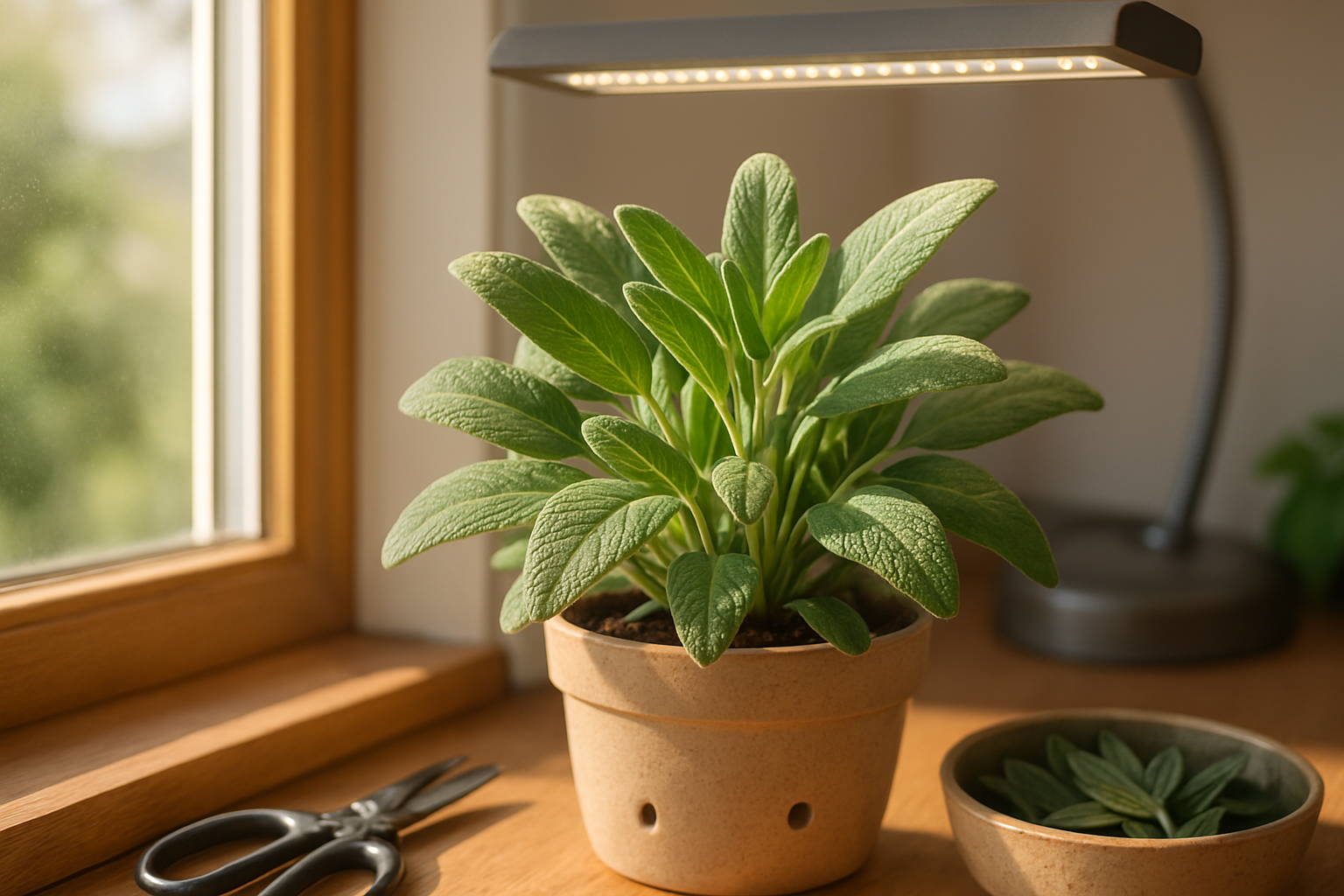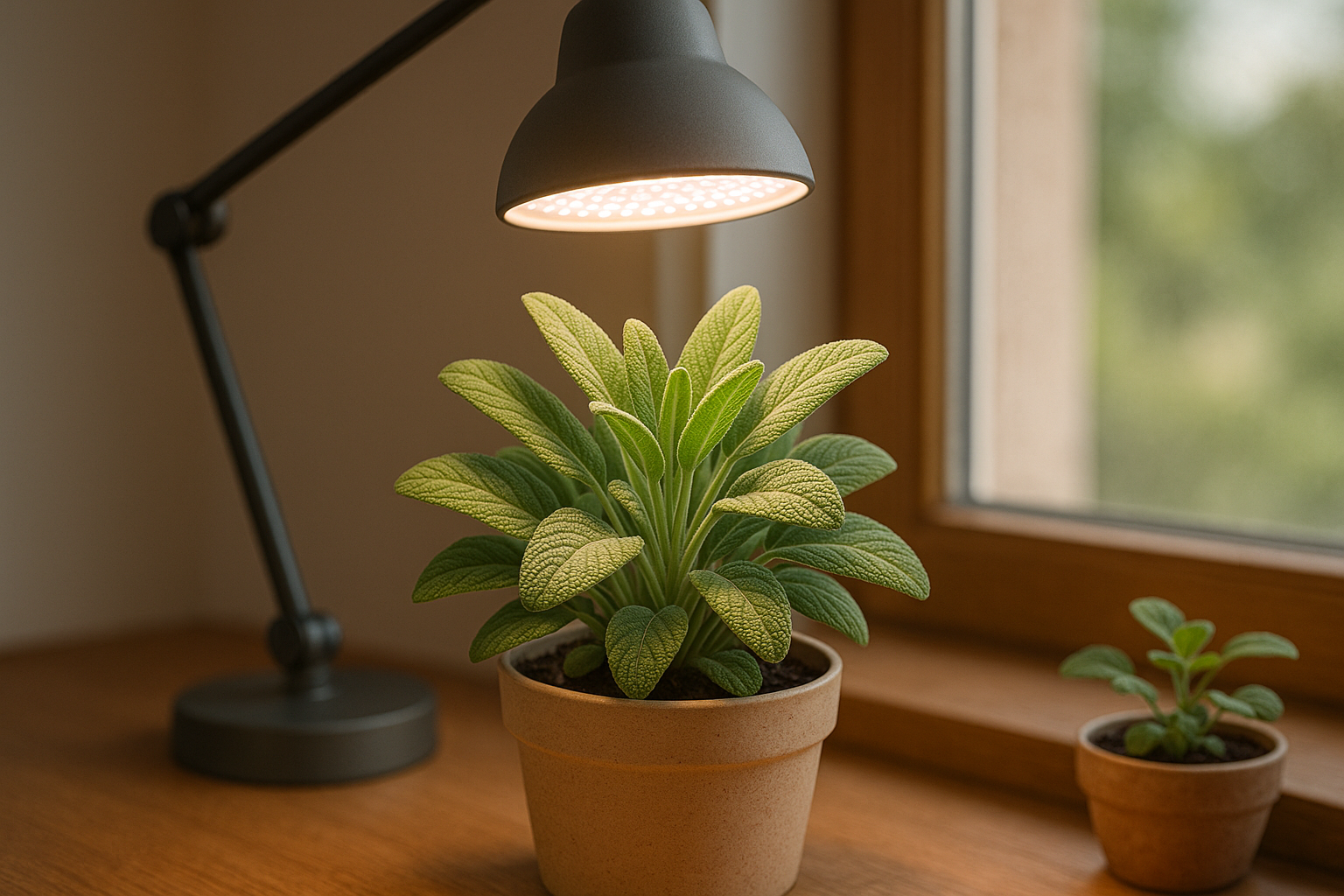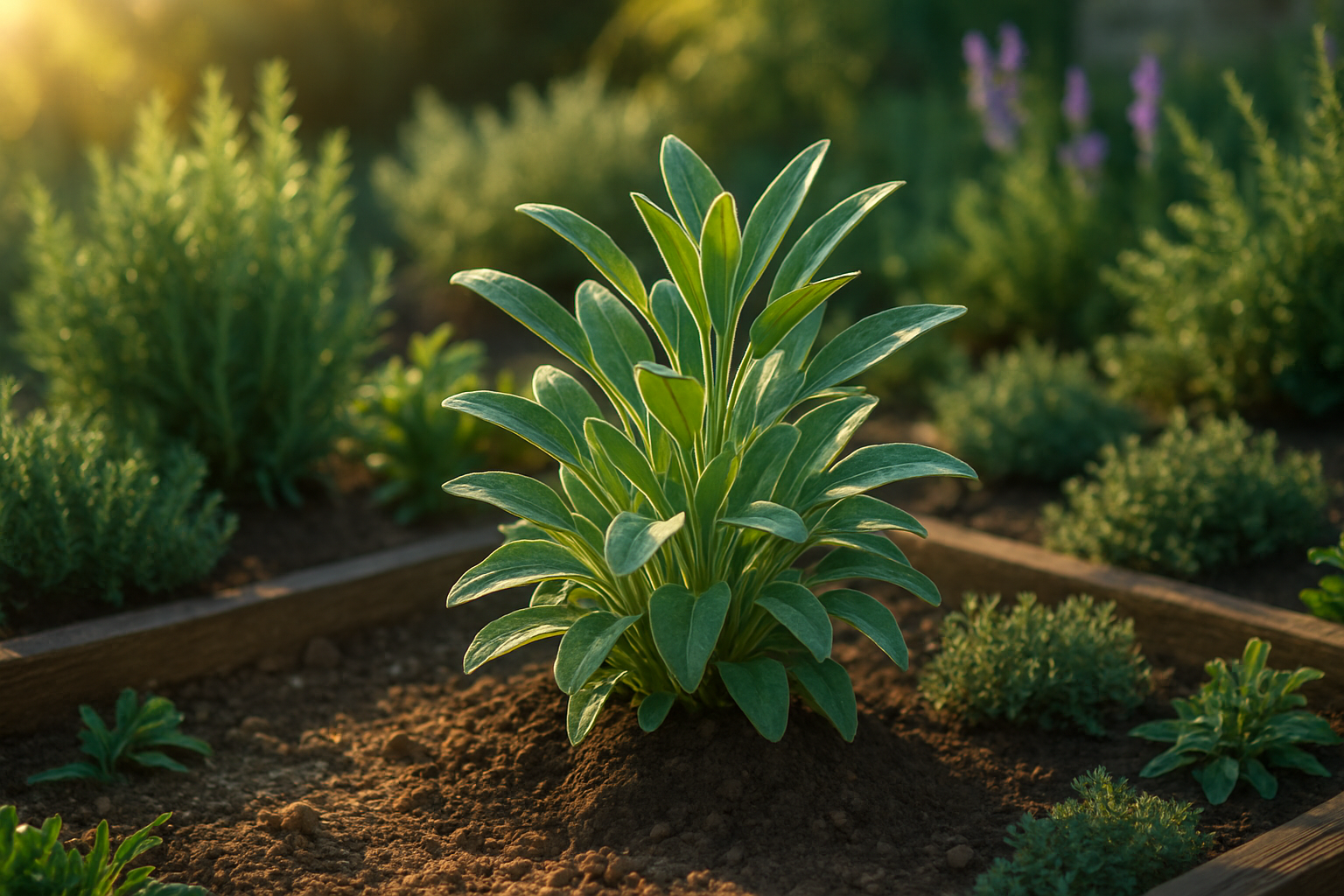Does Sage Prefer Full Sun or Shade?

Sage is a hardy herb that thrives best in full sun, making it a top pick for sunny gardens and patios. While it can tolerate some light shade—especially in particularly hot climates—sage truly shines when given at least six hours of direct sunlight each day.
If you’re growing sage indoors, be sure to place it near a south-facing window or supplement with grow lights to keep it healthy and flavorful. By understanding sage’s love for sunlight, you’ll be rewarded with robust, aromatic leaves perfect for culinary use.
Sage at a Glance
Sage (Salvia officinalis) is a classic herb cherished in kitchens worldwide for its earthy, slightly peppery flavor. It’s equally prized in gardens for its attractive silvery leaves and resilience. Native to the sun-soaked hillsides of the Mediterranean, sage thrives in conditions that mimic its homeland—think lots of direct sunlight, warm temperatures, and well-drained, not-too-rich soils.
This isn’t just a preference; it’s essential for its growth. Too little light results in spindly plants with dull flavor, while ample sun produces bushy, aromatic sage with the robust oils responsible for its signature taste. For gardeners, this means choosing a sunny spot—ideally a south-facing bed or windowsill if grown indoors. As a rule of thumb, aim for at least six hours of direct sunlight per day.
If your climate is more overcast or you’re limited to container gardening, rotate pots regularly and consider supplemental grow lights. Overwatering or heavy soils can dampen sage’s spirit, so err on the dry side and ensure pots have drainage holes.
The better you replicate sage’s Mediterranean roots, the healthier and tastier your harvest will be—perfect for everything from stuffing to teas. By giving sage what it naturally craves, you’ll enjoy more flavorful leaves and a sturdy plant that can become a lasting star in your garden or kitchen.
Ideal Sunlight Conditions for Outdoor Sage
In gardening terms, “full sun” means a spot that receives at least six hours of direct, unfiltered sunlight each day, which is essential for the healthy growth of most herbs, including sage. For the best results, common sage (Salvia officinalis) should ideally be planted where it gets between six and eight hours of sunlight daily. This exposure promotes strong, flavorful leaves and a robust plant structure.
While sage loves basking in the sun, it can tolerate partial shade, especially in regions with very hot summers or intense afternoon heat—think Southern U.S. or Mediterranean-type climates—where a little afternoon respite from the strongest rays can help prevent scorching. If your only option is a partly shady spot, make sure it still receives at least four hours of sun, preferably in the morning or late afternoon when temperatures are milder.
It’s also important to note that there are dozens of Salvia varieties, and their sunlight needs can vary. Ornamental salvias, like Salvia splendens or Salvia guaranitica, often prefer more shade in hotter climates to avoid leaf burn, but culinary sage benefits most from ample sun.
A good real-world tip: keep an eye on your sage’s color and leaf density—if it becomes leggy or pale, it may be craving more light. Regular observation and small adjustments to its spot can help you find the perfect balance, ensuring thriving sage all season long.
Growing Sage Indoors

When growing sage indoors, choosing the right spot is crucial for healthy, flavorful leaves. Sage thrives in bright, direct sunlight, so your best bet is to place the plant near a south-facing window, where it can receive at least six hours of sunlight per day. West-facing windows are great alternatives, especially if your sage isn’t getting enough morning sun but can soak up afternoon rays.
Without adequate light, sage often grows leggy and stretched out, reaching desperately toward the window. You might also notice pale, faded leaves instead of the vibrant green you want—both clear signs that your plant needs more light. If natural sunlight is limited, don’t worry; artificial grow lights can make a world of difference.
Full-spectrum LED grow lights, positioned six to twelve inches above your sage, provide the balanced wavelengths required for strong, compact growth. Set them on a timer to mimic day and night cycles, aiming for about 12 to 14 hours of light per day. A basic setup could be as simple as a desk lamp with a grow bulb over your plant and an inexpensive plug-in timer from any hardware store.
Remember to turn the plants every week so all sides get even exposure, helping to prevent lopsided growth. By paying close attention to both placement and supplemental lighting, you’ll keep your indoor sage lush, fragrant, and ready to flavor your dishes year-round.
Spotting and Solving Sunlight-Related Problems
Sage plants are pretty tough, but they’ll let you know when their sunlight needs aren’t being met. If your sage’s leaves look brown, crispy, or scorched, or if you notice bleached or yellow patches, it’s a sign the plant is getting too much direct sunlight, especially during intense afternoon hours. On the flip side, if the stems seem unusually long and thin, and the leaves are small or far apart, your sage is likely begging for more light.
To troubleshoot, start by observing your plant’s current spot throughout the day—morning sun is usually gentler and perfect for sage, while harsh midday or afternoon rays can cause burning.
If growing sage indoors, place the pot near a bright window with lots of indirect light, or supplement with an LED grow light if natural light isn’t cutting it. For outdoor sage getting too much sun, consider moving the pot to a spot that gets a few hours of morning sun and shade in the heat of the day.
If your sage is planted in the ground and needs more shade, try planting a taller companion nearby or using a shade cloth during peak summer. Conversely, if your plant is looking leggy and weak from too little sunlight, move it to the sunniest available window indoors, or outdoors to an area with at least six hours of direct sunlight daily.
Always move plants gradually—sudden changes in light can shock the plant, so increase or decrease exposure over several days. These small adjustments can quickly restore your sage to vibrant, healthy growth.
Integrated Garden Planning
Sage thrives best when planted in herb beds or containers that receive at least six hours of full sun daily. Choose a spot with minimal shade—southern exposures often work perfectly. Space sage about 18 to 24 inches apart to encourage good air circulation and reduce humidity that can attract mildew.
For a productive, healthy herb garden, group sage with other sun-loving herbs like rosemary, thyme, oregano, and lavender. These companions share similar water and soil needs, won’t compete for resources, and can even enhance flavor and pest resistance. For example, sage’s aromatic oils may help deter certain insects, benefiting nearby plants.
If your herb patch includes shade-tolerant varieties like parsley, cilantro, or chives, plant them along the eastern or northern edges of your beds where they’ll get partial shade from the taller sun lovers. This layered approach mimics natural ecosystems while maximizing your garden’s space.
In containers, try a “thriller-filler-spiller” arrangement—using sage as the central feature (thriller), surrounded by compact sun lovers (fillers) such as thyme, with trailing herbs like creeping rosemary (spillers) cascading over the edge. This design not only looks attractive but also encourages healthy root growth and discourages pests.
As a bonus tip, avoid planting moisture-loving herbs like basil right next to sage, since their differing needs can cause one to struggle. Thoughtful companion planting leads to fewer pests, better yields, and a thriving, low-maintenance garden.
Seasonal Light Adjustments and Care Tips
Sage is a sun-loving herb, but its needs shift with the seasons and depending on where you grow it. Outdoors, sage thrives in full sun during spring and summer, soaking up at least 6-8 hours of light a day. However, during peak summer, intense midday heat can stress the plant—especially in hot climates. To protect your sage, consider providing dappled afternoon shade or using a lightweight garden fabric to prevent leaf scorch.
In contrast, sage grown indoors during the winter may struggle with low light. Move indoor pots to the brightest south-facing window, or supplement with a grow light for 12-14 hours daily to keep stems compact and leaves flavorful. Excessive shade leads to leggy growth; prune out weak or stretched stems regularly to encourage bushy regrowth.
Adjust watering depending on light levels: sage in full sun, warm weather, or with artificial lighting usually needs more frequent watering, while low-light or cooler conditions require less—so always let the soil dry between drinks to prevent root rot. For feeding, a light dose of balanced fertilizer in spring supports healthy growth, but reduce feeding in winter, as sage’s growth naturally slows with limited sunlight.
This flexible care approach will help your sage plant look and taste its best all year.
